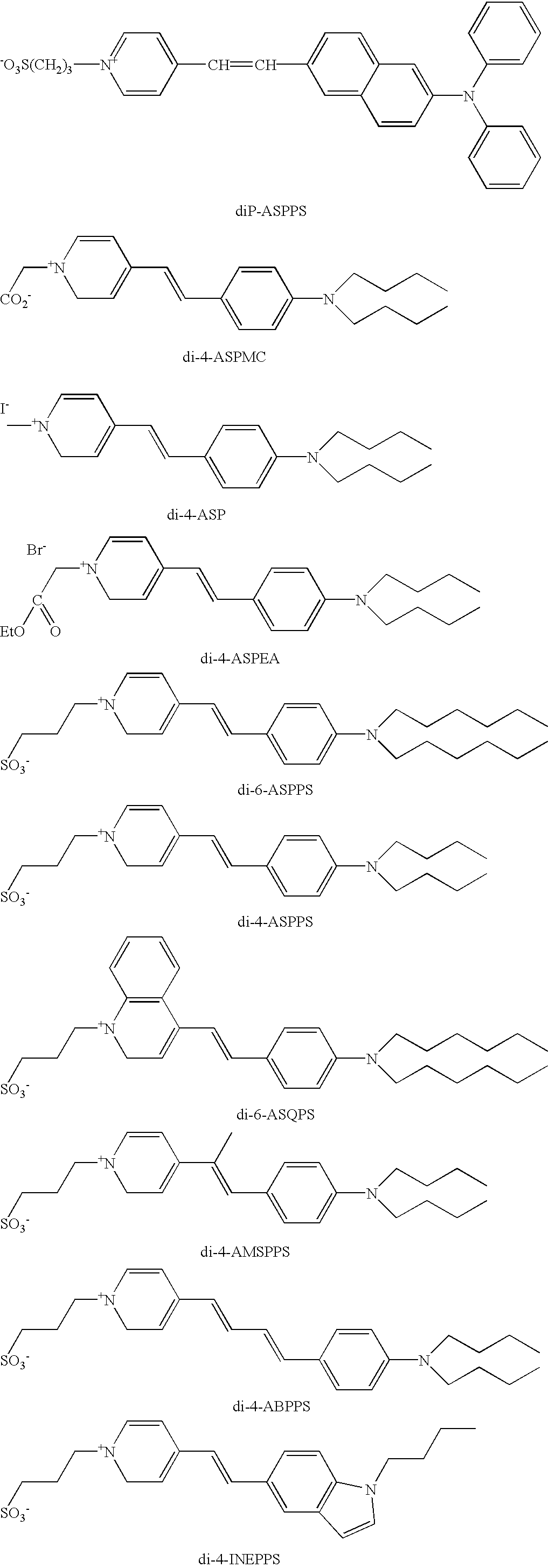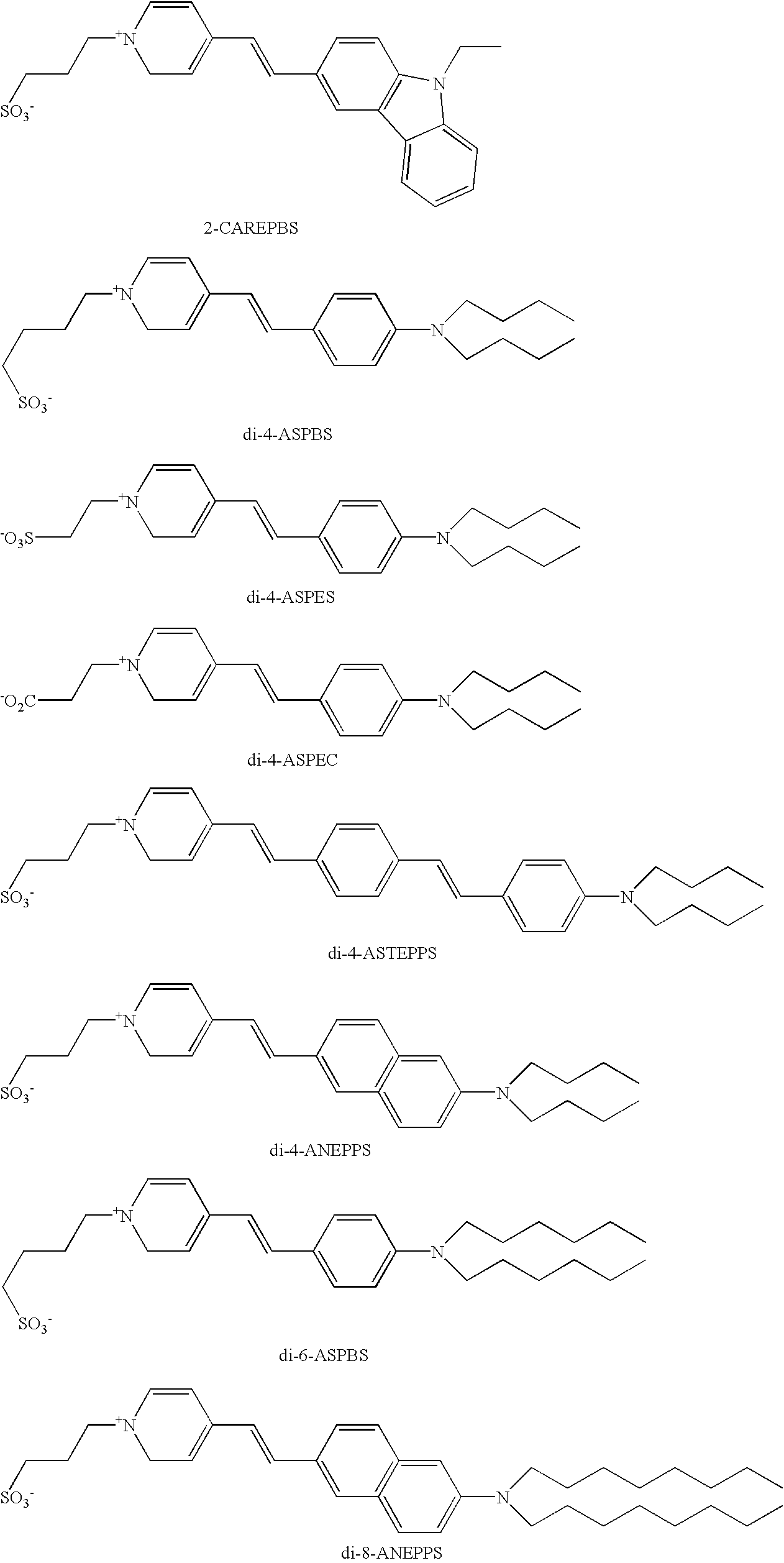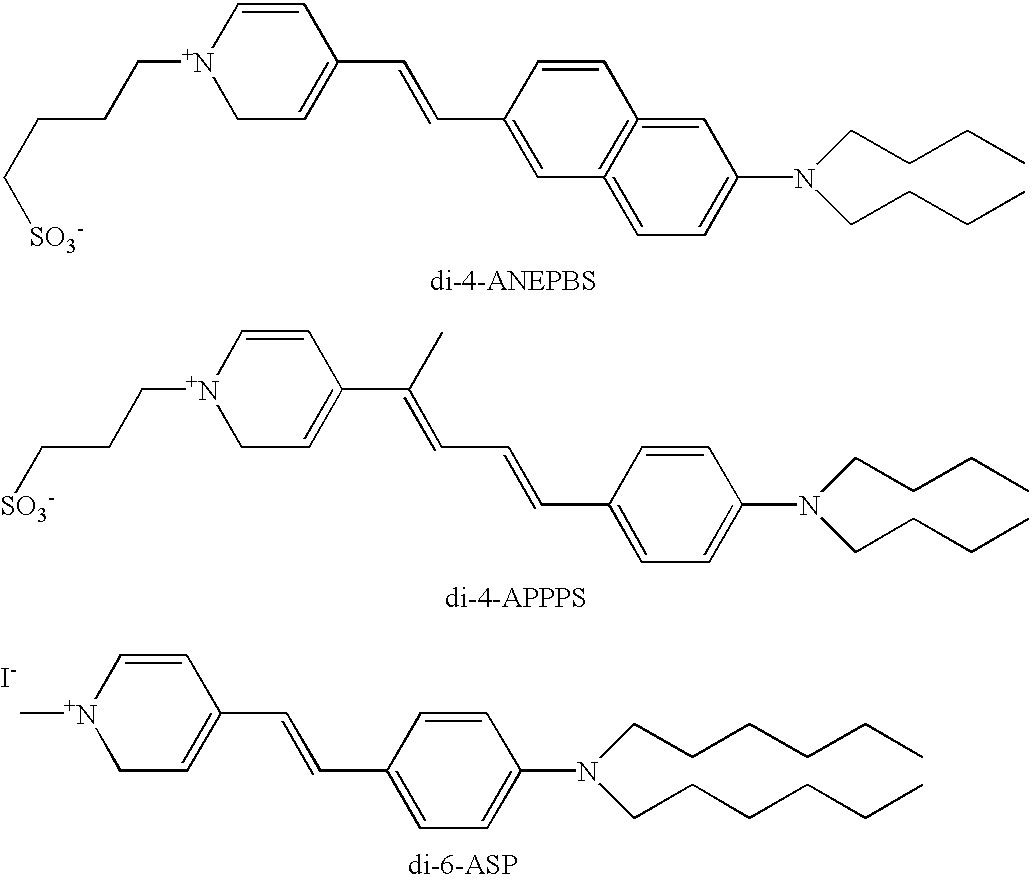Method and apparatus for imaging and documenting fingerprints
a fingerprint and imaging technology, applied in the field of detection and documentation of latent fingerprints, can solve the problems of not disclosing all latent fingerprints, difficult to detect latent fingerprints, undetectable prints,
- Summary
- Abstract
- Description
- Claims
- Application Information
AI Technical Summary
Problems solved by technology
Method used
Image
Examples
example series 2
The sensitivity of the method of the invention was demonstrated by applying a spot of about a 10 .mu.l aliquot of a solution of lard diluted in chloroform. The lard solutions were graduated in concentration so that the amount of lard contained in and deposited on the substrate by a 10 .mu.l aliquot of the solution ranged from 50 .mu.g to 5 ng of lard. After treating the substrates with the di-8-ANEPPS 6.75.times.10.sup.-6 molar solution in distilled water by dipping for 80 seconds, the substrates were dried and then illuminated with a tungsten-halogen lamp and photographed with the CCD camera. The images produced by the lipid spots were analyzed by comparing the average signal intensity produced by the spot image to the average intensity of the background (the non-spotted part of the substrate) to arrive at a contrast ratio. No significant differences were noted in the contrast ratios over the range of lipid concentrations tested. It will be appreciated by those skilled in the art t...
example series 3
In a further series of examples, latent fingerprint images made on substrates with natural sebaceous secretions as described above were examined. The substrates bearing the latent sebaceous fingerprints were treated with one of solutions of the dyes: di-8-ANEPPS; di-4-ANEPPS; and di-phenyl ASPPS. When the substrates were dried the latent image remained invisible to the human eye when illuminated with ambient light. However, when illuminated under a blue light source (all of the blue sources used worked well) a well-stained fingerprint was revealed as a faint red colored blur. When viewed through a bandpass or long-pass filter to block the scattered blue light, a very clear, bright yellow fingerprint could be clearly seen. In the images, the ridges of the fingerprint appeared as brightly fluorescing lines. The valleys between the fingerprint ridges remained dark and of low or no fluorescence. It was noted that all three dyes exhibited emission maxima near 590 .mu.m wavelength and the...
example series 4
Forensic scientists have been faced with the daunting problem of imaging and documenting latent fingerprints on human skin. Background fluorescence for skin, both animal and human, is high. In fact, at 450 nm wavelength background fluorescence is typically several times higher than the background fluorescence emissions from white paper such as the back of a business card. Latent fingerprints formed from naturally occurring sebaceous secretions were made on samples of fresh pigskin obtained from a grocery store. In this example the pigskin serves as a particularly close model for human skin. The pigskin samples were treated with solutions of the fluorescent dyes of the invention and in each instance the diluent from the dye solution was permitted to dry. An argon laser was used to illuminate the latent fingerprint and a photograph was made with the CCD camera. A visible and readable fingerprint image was produced by each dye. However, the best results were obtained using the di-pheny...
PUM
 Login to View More
Login to View More Abstract
Description
Claims
Application Information
 Login to View More
Login to View More - R&D
- Intellectual Property
- Life Sciences
- Materials
- Tech Scout
- Unparalleled Data Quality
- Higher Quality Content
- 60% Fewer Hallucinations
Browse by: Latest US Patents, China's latest patents, Technical Efficacy Thesaurus, Application Domain, Technology Topic, Popular Technical Reports.
© 2025 PatSnap. All rights reserved.Legal|Privacy policy|Modern Slavery Act Transparency Statement|Sitemap|About US| Contact US: help@patsnap.com



